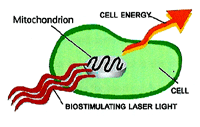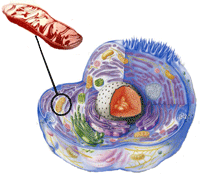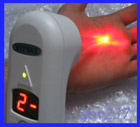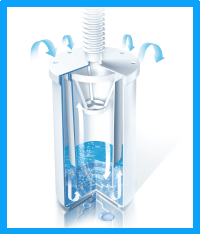LASER THERAPY
Light is one of the most fundamental forces of life. It provides energy and facilitates the metabolic processes essential to life.
The lasers are the latest and the most advanced light sources. They generate artificial light and amplify it into focused intense beams of light. Laser technology plays a growing role in many aspects of modern life, including medicine and aesthetics. Non-invasive low level laser therapy - cold laser therapy or soft laser therapy - has a bright future!
When laser light is absorbed by a living tissue, it triggers biological reactions in the cells. Chemical substances are produced, released and carried by blood and lymphatic flow to other parts of the system. Hence, the effects of cold laser light may not be only local, but can also achieve wide systemic effects.
Therapeutic effects of low level laser light irradiation include the following:
increased production of ATP (Adenosine TriPhosphate)
increased cellular metabolism
increased collagen production
increased enzyme production
increased protein synthesis
better blood flow
better lymphatic flow and drainage
reduced inflammation
The main and the most important effect of laser light on cells is the accelerated production of the ATP (Adenosine TriPhosphate). ATP molecules are found in the cells of all living things. In animal and human systems, Adenosine TriPhosphate is synthesised in small cellular organelles called mitochondria. In the mitochondria, the primary cellular energy source - the ATP - is produced by combining oxygen with sugar derived from food.
capable of harnessing the chemical energy generated from the breakdown of the foodstuffs and transporting it across cellular membranes for conversion into 'fuel' that is required for normal body functioning. Adenosine TriPhosphate is often referred to as the 'energy currency of life'.
If a person has insufficient levels of ATP available, the energy cannot reach the tissues. This can lead to a variety of health problems, such as a susceptibility to infectious diseases, poor wound healing, inflammation and swellings.
In short - the low level laser therapy devices (soft lasers or cold lasers) deliver light into living tissues (this process is also referred to as 'phototherapy'), increasing the ATP and shuttling more energy and nutrients around the body for healthy metabolism and the appropriate functioning of organs. Please note that therapeutic cold lasers - also called cold lasers or soft lasers - are not 'heat lamps' and they do not cause perceptible tissue heating or even warming. Cold laser light does not heat treated tissues. The Low Level Laser Therapy - also called Cold Laser Therapy and/or Soft Laser Therapy - exerts photochemical effects rather than thermal.
Low level laser therapy devices - cold lasers - have been in medical and veterinary use for some 35 years. In the USA, the FDA recently approved therapeutic/medical low level lasers for human use, because of their excellent safety with no significant risks attached. To date, much efforts have been vested in research into the effectiveness of the LLLT - cold laser therapy - and its applications in medicine, dermatology and anti-aging indications.
Unique properties of low intensity laser radiation or low level laser therapy (LLLT), confirmed by persistent investigations and clinical trials, resulted in more active use of lasers in medicine. A term laser (or quantum) medicine and fast development of such branch as laser physiotherapy can be considered as a consequence of rising interest to the problem.
Excellent practical results, confirmed by trustworthy medical institutions, make a lot of doctors including sceptics, change their opinion and introduce physiotherapeutic laser as an instrument solving many problems.
Use of laser therapy by a wide range of doctors of various specialities permitted to change a physiotherapy role in the treatment of many diseases transferring it from the secondary to the powerful means of the treatment and prophylaxis. Low level laser therapy permits in a lot of cases to decrease the number of medicines and sometimes to turn down the medicines in general . It is observed in significant (2-3 fold) shortening of the recovery duration, sometimes laser low therapy prevented surgical intervention.
An important property of the technology is a combination of efficiency and comfort for the patients and doctors.
Low-intensity laser radiation (power density from 1 to 100 mW/cm2) has now securely entered the inventory of the modern medicine as a very efficient asset to treat a broad range of diseases: old nonhealing wounds and skin ulcers; gastric and duodenal ulcers; diseases of oral cavity mucosa and paradontium; post-surgery wounds; injuries; rheumatoid arthritis; intervertebral and strain osteochondrosis; gynecopathies; dermatoses; acute and chronic diseases of ears, throat and nose; burns; prostatites; pancreatites, cholecystites and many other diseases.
Literature
The NADA Protocol
In the mid-1970s, Michael Smith, a medical doctor at Lincoln Hospital in the South Bronx area of New York, modified an existing system of auricular acupuncture into a simple technique for the treatment of many common drug addictions as an alternative to methadone. This selection of ear points proved to be extremely effective in the treatment of addictions, and became what is now referred to as the “NADA protocol.”...Download article >>>>



H E A L T H
L i v e a g r e a t l i f e

